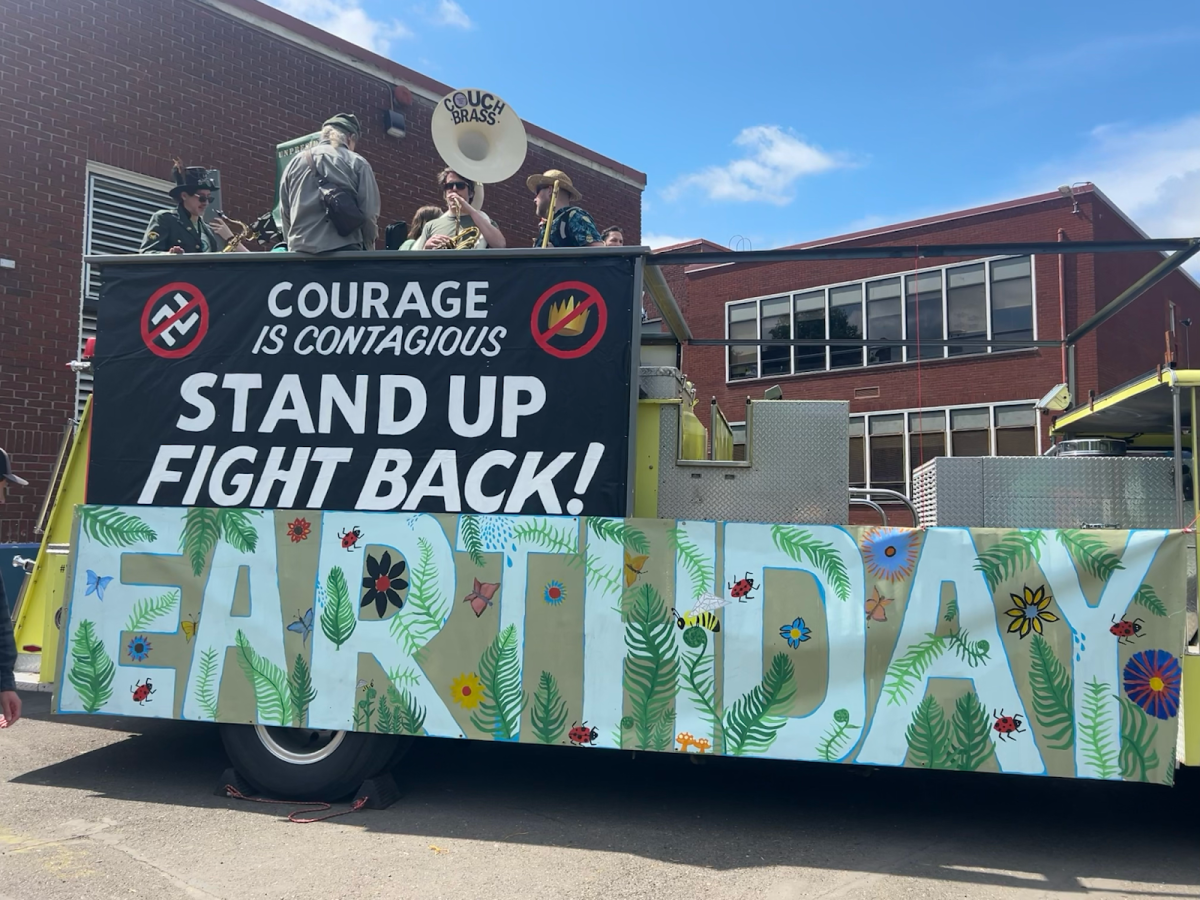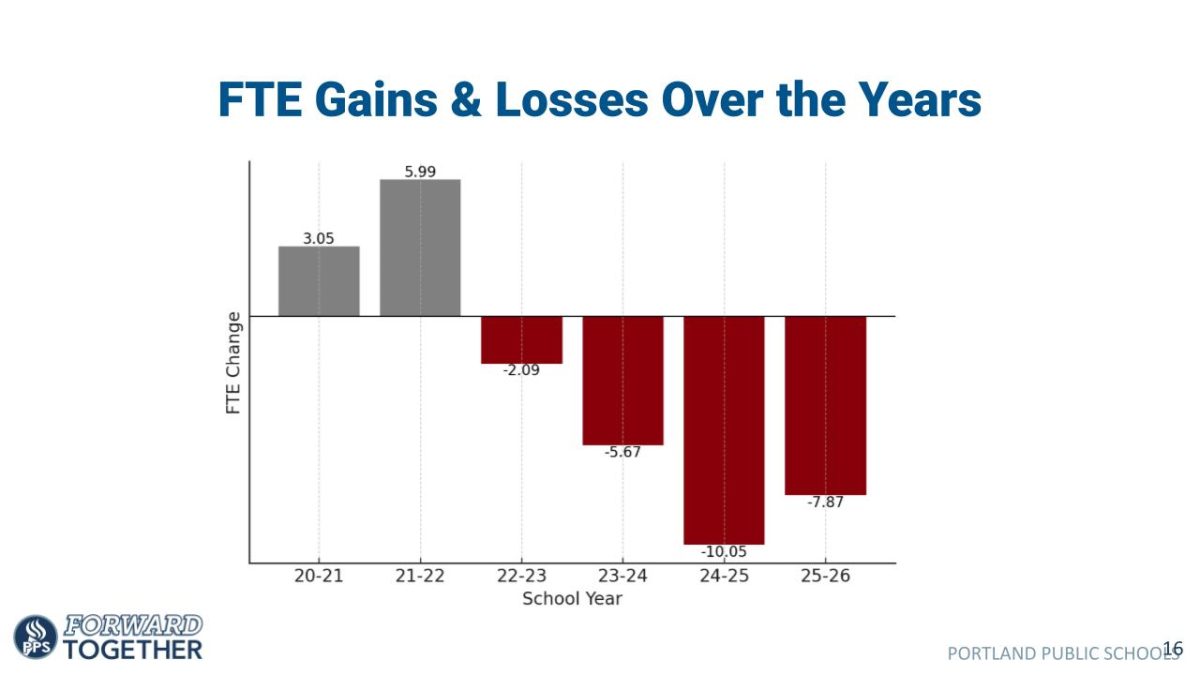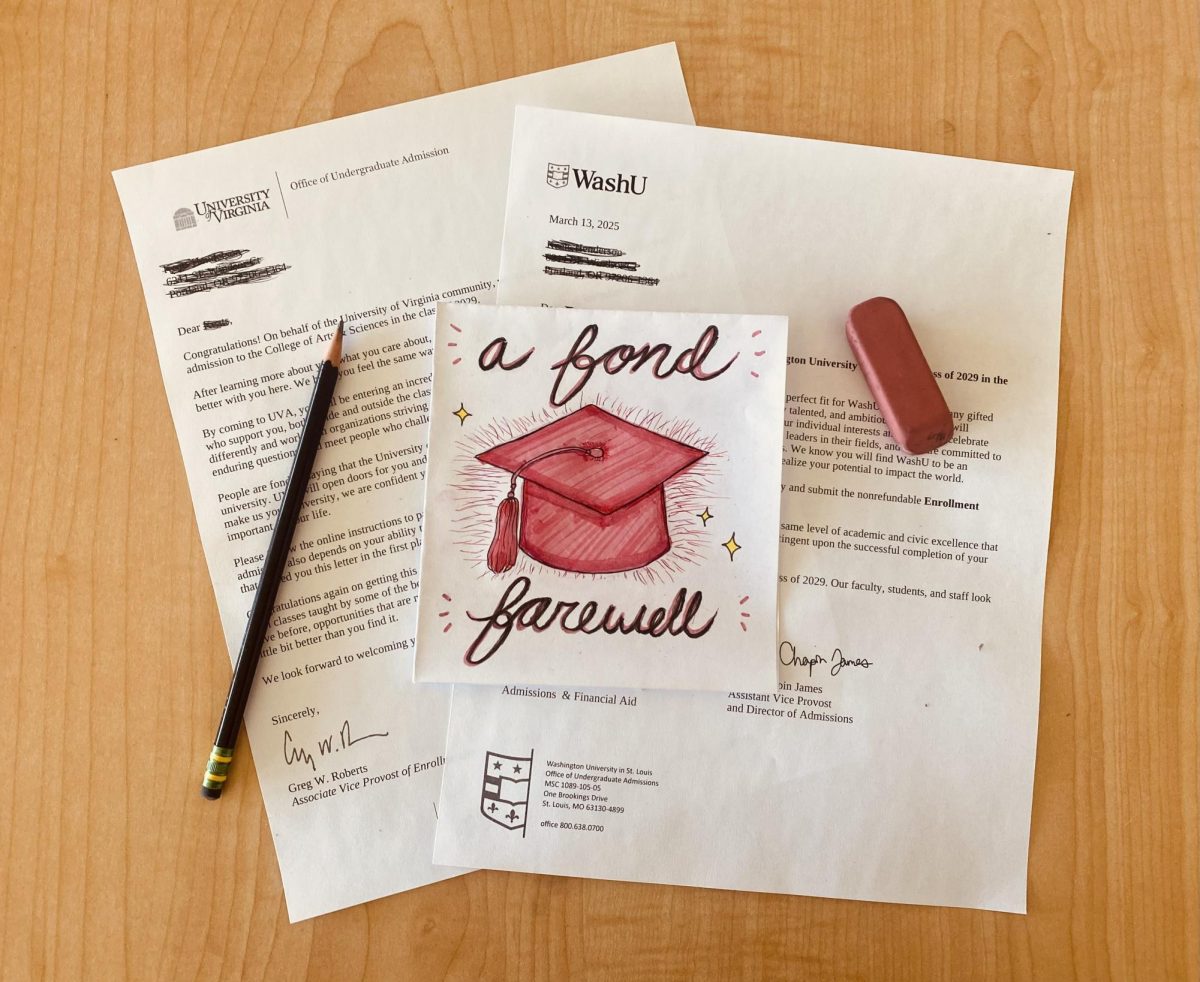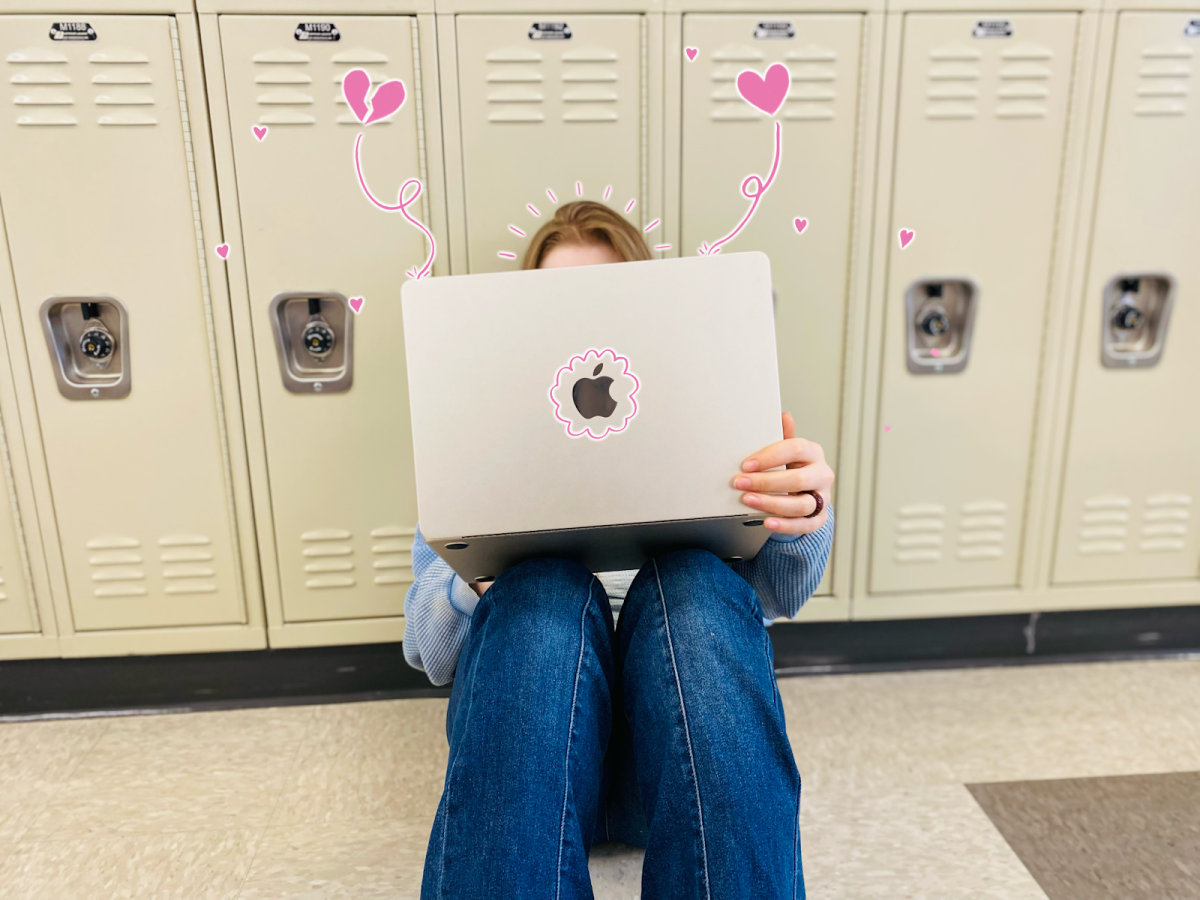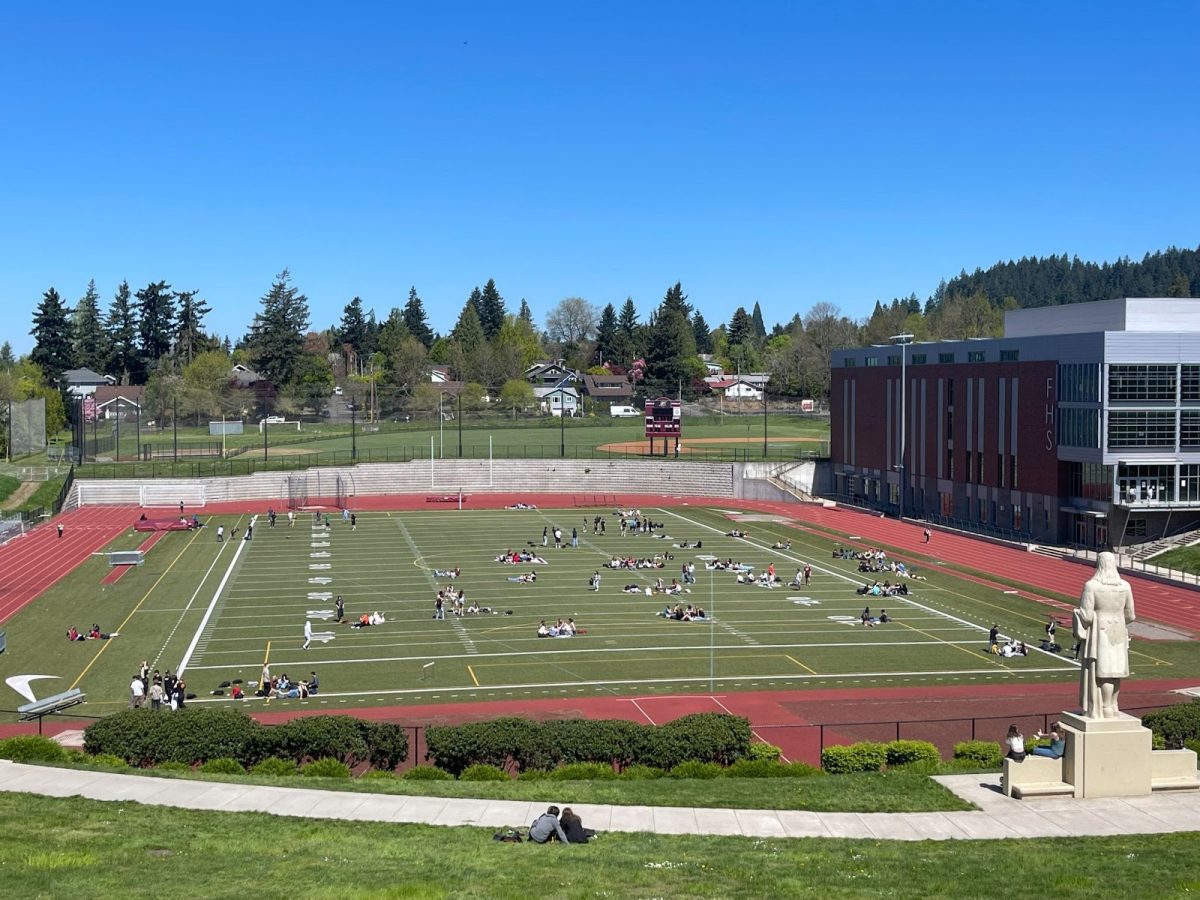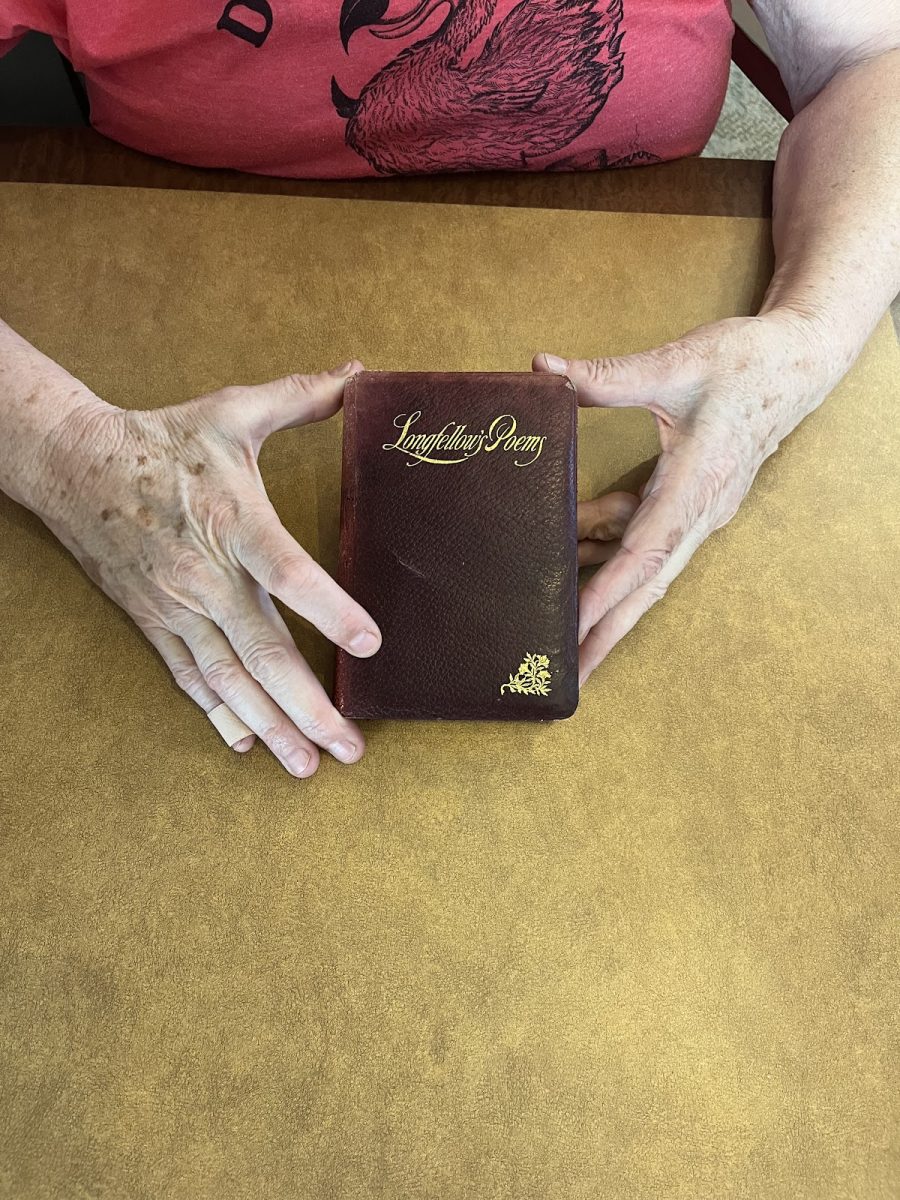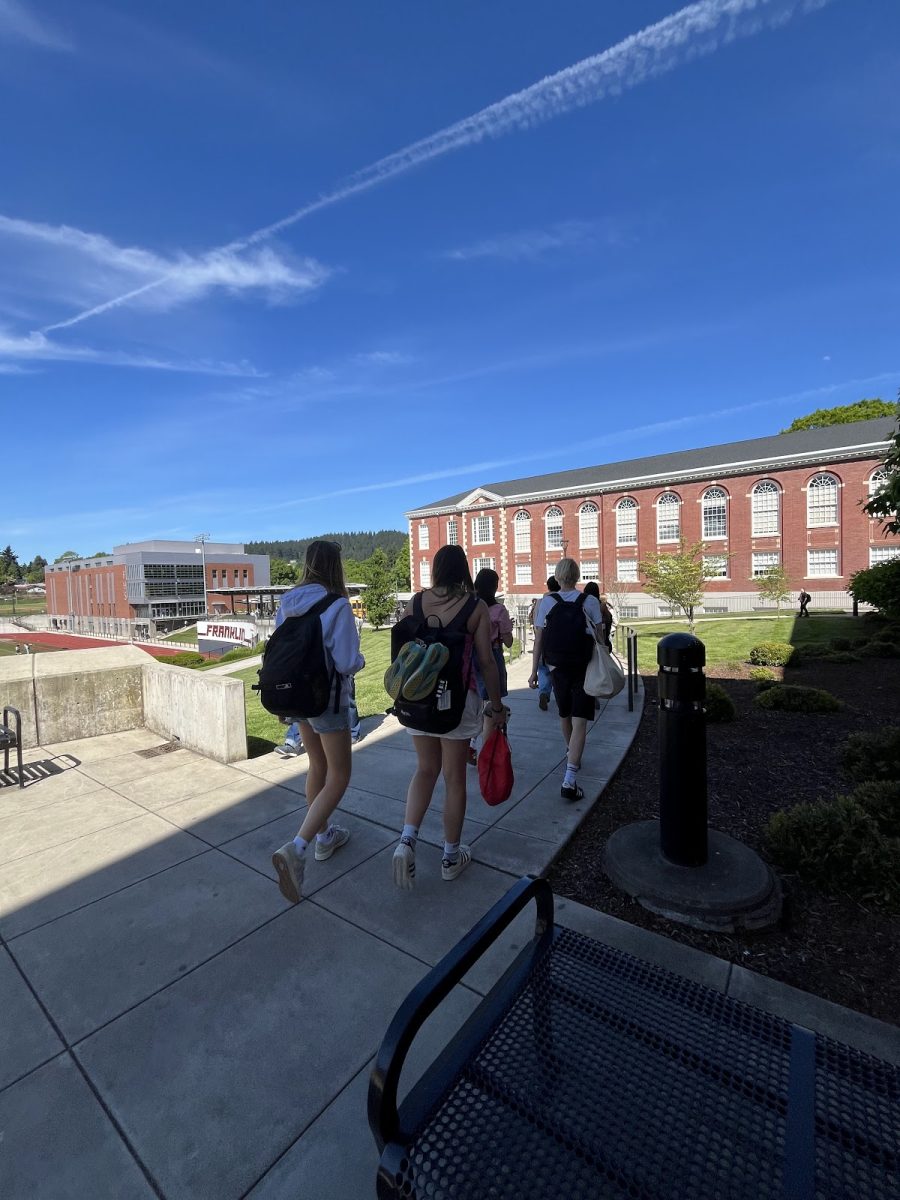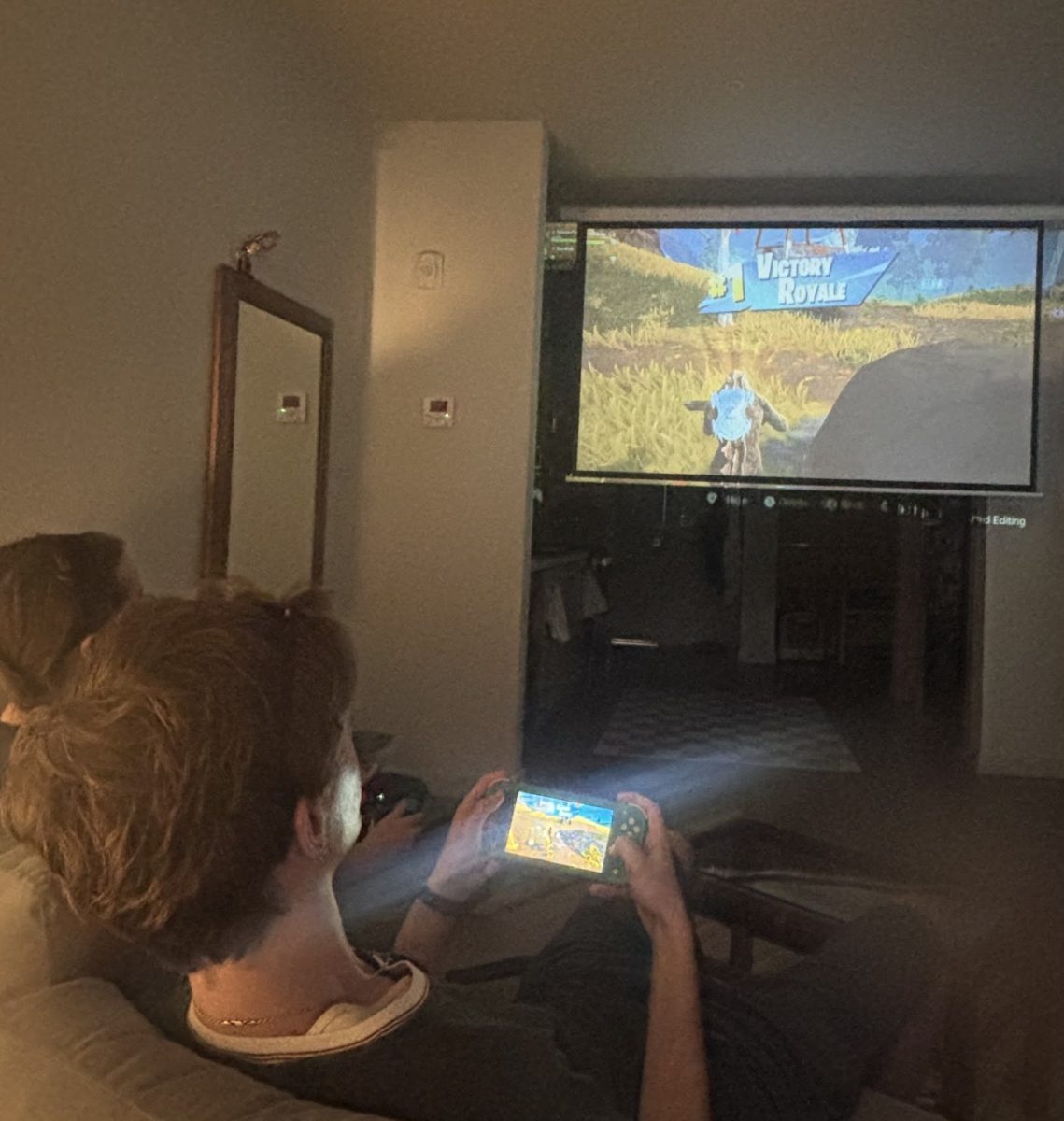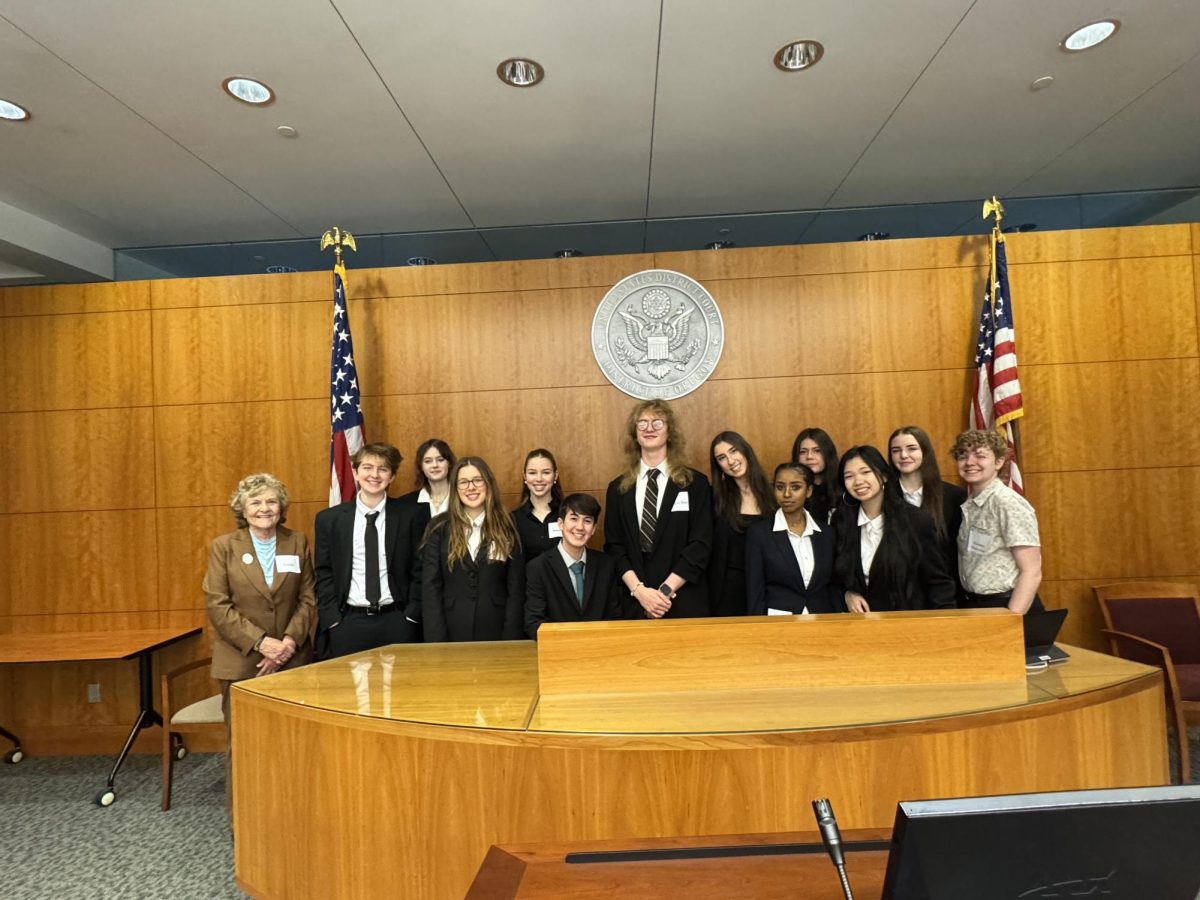
Franklin High School has recorded 34 positive COVID-19 cases since the start of the year, leading all Portland Public Schools’ buildings in total cases. As cases continue to climb, concern within the school is rising over the district’s and administration’s protocols and response.
Franklin’s first COVID-case was identified on September 7, 2021. Since the first case, the high school has averaged 4.85 positive cases per week. In the seven weeks from Sep. 5 to Oct. 22, 2021, Franklin’s weekly positive-case per capita rate was approximately 2.1 per 1000 people, based on an estimated student/staff population of 2300, noticeably higher compared to the Multnomah County average for the same time period of 1.4 per 1000 residents based on 2019 population estimates. In addition, Franklin has experienced the most positive staff cases of any school in the district, with five, and the most cases in a single day, also with five, set on Oct. 21, 2021.
Despite Franklin’s numbers, Multnomah County COVID-19 Nursing Supervisor Sara McCall is not discouraged. McCall said, “I would say that [Franklin’s case count] is actually pretty good, such a large population and a fairly low amount of cases.” McCall provides context by citing in pre-pandemic years when her team tracked flu outbreaks: “[Multnomah County] really wouldn’t do much” until roughly 10% of a school’s population showed signs of contraction.
Franklin Principal Chris Frazier cites the school’s high enrollment in regard to the heightened case count. “I think it could potentially have something to do with the size of our school,” Frazier said.
“When you think of just pure, pure numbers we are the largest… or I think we’re right up there with Grant. The more people, proportionally, there may be more cases,” Franklin COVID-19 Administrator and Vice Principal Scott Burns adds.
Widely accepted findings published by the Centers for Disease Control and other sources show that COVID-19, as an airborne virus, is prone to proliferate more in spaces where large numbers of people gather in smaller spaces. However, while Franklin does have the largest high school student population in PPS, the district’s data thus far shows no correlation between enrollment statistics and positive cases. Grant, closely behind Franklin as the second largest PPS high school, has recorded 18 cases (5th in PPS), and Cleveland, the third largest PPS high school, has only recorded 7 total cases, the least of all major PPS high schools. This raises more questions than answers, but it could be evidence that mask wearing, ventilation, and other PPS protocols are working.
McCall and her team primarily track evidence of the virus spreading in schools. “What we have seen less of, in my opinion, is that true evidence of transmission where we’ve dug in and looked at the exposed cohorts and we really haven’t seen any of them getting sick after being exposed to that one person. It’s really more of people are exposed outside of school and they happen to bring it into the school,” says McCall. Transmission between a COVID-positive individual and the exposed cohort is a major indicator of if protective measures are sufficient in preventing the spread of the virus. Inside the classroom, concern runs far deeper than any transmission rate.
On May 25, 2021, Portland Public School’s board voted unanimously to reopen all schools full-time for the 2021/22 school year. Now, almost two months into the year, staff members are questioning the decision. The Franklin Post interviewed an anonymous staff member who tested positive for COVID-19. When asked if they thought the correct balance had been struck between education and safety, the anonymous staff member wrote in an email, “ABSOLUTELY NOT. Online learning is challenging for many students, but going back into FULL FORCE school like we did before we were in a pandemic while we are STILL in a pandemic is irresponsible and puts so many people in unsafe situations.” The anonymous staff member provides opposition to McCall’s claim saying, “My only suspicion of how I contracted COVID-19 is at school. It’s the only place where I am exposed to so many people in a closed setting.”
“In terms of providing safety and support, we’re doing what we can under the circumstances,” says Principal Frazier. “We would obviously want to be at a place where everyone could be six feet apart, we’d obviously wish that everyone was washing their hands and wearing their mask… we’ve measured in some classrooms, it works, where we were at three feet. [There are] some [where] it doesn’t.” Franklin also faces a custodial shortage, which has stunted the school’s ability to clean surfaces and execute other protective measures.
Franklin Biology Teacher Erin McCracken Ferro says, “Well, we’ve been asked to do something that we don’t all feel comfortable with… it seems like we’re just trying to see how much we can get away with.” The uncertainty expressed by Ferro echoes the anonymous staff member’s emotions after contracting COVID-19: “I am surprised and disillusioned, even though logically I felt like we were being put in unsafe conditions.”
As Franklin has the highest number of COVID-19 cases in the district, one of the Franklin students’ and staff’s main concerns is how the cases are being managed. The duty of tracking cases, overseeing contact tracing, and providing support to exposed and positive individuals mainly falls back onto Franklin’s COVID-19 Administrators, VP Scott Burns and School RN Nurse Kay Manley.
Students and staff must self-report all positive tests to Franklin in order for the protocol to be triggered. Any Franklin student that reports a positive test is first referred to Manley. In ordinance with PPS and Oregon Health Authority protocol, Manley assists the COVID-positive community member and their family in filling out an SCIF and STT, which are both COVID-19 information forms. All students who test positive are required to isolate regardless of vaccination status.
Next, Manley alerts the Multnomah Education Service District (MESD) of the case. In a matter of hours, MESD sends back a debrief determining if an exposure could have occurred within the school. This determination is based on when the student developed symptoms, tested positive, and was last in the school. If the COVID-positive community member was on-site during their infectious period (the two days prior to the positive test), MESD will identify that an exposure could have occurred.
Figuring out who is in an exposed cohort relies heavily on the definition of “close contact.” Per the Oregon Health Authority’s (OHA) COVID-19 FAQs for Schools and other OHA guidances, “Close contact refers to when a person has come within about 6 feet of anyone who has COVID-19 for 15 minutes or more, cumulatively within a 24-hour period.”
This information notwithstanding, the close contact definition used by most schools, including Franklin, is stated in a small clause of OHA’s “Planning for COVID-19 Scenarios in Schools,” which adds an exception to the six feet rule; “Students who were within 3 to 6 feet of someone with COVID-19 where both students were engaged in consistent and correct use of well-fitting masks and other K–12 school prevention strategies (such as universal and correct mask use, physical distancing, increased ventilation) were in place are not considered exposed. This exception does not apply to teachers, staff, or other adults.” While backed by CDC protocol, the exception has a sizable impact on who may be considered exposed when an onsite case occurs. McCall says, “We work together to come up with a definition of what a close contact is, then the schools use that to determine who was exposed, because that’s their expertise, they know what their classes look like.”
When Franklin obtains a debrief indicating an exposure is possible, the school then has just 24 hours to conduct contact tracing and notify the entire Franklin community and any individuals who may have been exposed as determined in contact tracing, according to Manley and Burns.
Manley refutes the idea that the system is overwhelmed or that the administration is having difficulty executing protocol within 24 hours. She even suggests that Franklin’s case count could be attributed to the efficiency of the administration’s reporting, “It also might be that we’re really honest… we are recording them [cases], it may be that other schools aren’t quite efficient as we are.”
The anonymous COVID-positive Franklin staff member tells a different story: “I think the process takes too long. It was not until three days after my positive test, almost six days after my initial symptoms, before it was finalized that I likely did not infect anyone. By then, if I did [infect students], they would likely have started infecting people, from what I understand.”
McCall is aware of these time gaps. “A lot of the time especially with COVID we will see people getting sick, they might wait a couple days to get tested… It might take a day or two to get there depending on what kind of test it is, so there’s another delay,” he says. “And then with any bureaucracy, you know there are delays in getting information back and forth, so unfortunately sometimes it does lead to people not getting notified about exposures until well after the fact.”
Designated Franklin COVID-19 Administrator Scott Burns is responsible for tracking cases and determining who may have been exposed. Testimony from the COVID-positive student in combination with information obtained from teacher interviews helps Burns create an exposed ‘cohort.’
Teachers are asked broad questions about the nature of the class in relation to the protocol. The Franklin Post has obtained the questionnaire given to teachers who have had a COVID-positive student in their class. A total of six questions are asked inquiring about mask-wearing, distancing, group, and one-on-one work. If the teacher concludes that all students were following the protocol and were three feet apart, no one from the class, even students who sat directly adjacent to the COVID-positive student, will be separately notified of an individual exposure.
Only students who are not vaccinated are required to quarantine; all others can continue their attendance to school so long as they don’t have symptoms. Since Franklin staff is not allowed to ask students their vaccination status, it comes down to families to self-quarantine if they are not vaccinated. Frazier says that “we are holding on to hope and hoping that our families and students will be honest and forthright as we’re trying to partner in their education.” However, for many, this system has been a source of apprehension.
For teachers and staff, one of the hardest pieces of the current circumstances is attempting to manage and help students who are absent while also attending to in-person students. Teachers have been asked by staff to maintain their Canvas page to help isolated and quarantined students. Ferro is doing so but worries that other teachers are not. “For Biology, I keep everything in Canvas so that if you’re home quarantining or you get sick that you can still have access to education,” she says, “but I know that not all teachers are doing that, so it’s actually not as equitable as they make it seem. We want to have the schools open, we want to make it accessible to everybody, but it’s actually not playing out that way, not across the board.”
Confidentiality information around COVID-19 has also made it difficult for teachers to provide help. Teachers and students alike do not know the identities of COVID-19 students, even if they are enrolled in one of their classes. “One of the students that I knew like [from] word of mouth that had COVID, they never actually reached out to me…they weren’t turning in work.” This means it falls back on students to communicate with teachers to get work done when out. “If a student is out with a broken leg, for example, or any other medical reason, it is part of the student’s responsibility to communicate with the teacher that they’re out and to get academic work,” says Burns. This confidentiality policy also invites the possibility of a student who is supposed to be isolated or quarantined attending school without being detected by admin or teachers, although there are attendance protocols in place to prevent this.
In response to heightened cases and concerns, Franklin’s administration is advocating for more resources. Franklin is attempting to hire a data clerk who can assist and provide support to Manley and Burns, who must handle their ordinary job responsibilities in addition to their COVID 19 Administrator responsibilities. Recently, PPS, in collaboration with Oregon Health & Science University (OHSU), has unveiled an optional weekly testing program that hopes to help track transmission and cases.
For most of the 2020/2021 school year, Franklin was fully online, with a four-classes-per-semester schedule, only offering a hybrid option for the last two months of the year. Now, Franklin has resumed the eight-class schedule, in person, where teachers are required to both manage students who haven’t been in a classroom in over a year and navigate their COVID procedures and their own needs. “We [teachers] need more time (always), but going back to having 180-200 students and 90 minute block classes… Teachers are being asked to do too much. We have families and if we get infected then we infect our families and for many of us that means unvaccinated children or people who will really suffer if they get COVID,” says the anonymous Staff Member.
“The school transitioned from “CDL [Comprehensive Distance Learning] to hybrid and then ‘poof,’ we’re all back in-building in-person, and it’s created a lot of difficult challenges for our school community,” says Frazier. “Our teachers are working hard, they are working extremely hard trying to give students access to their education while still balancing their own personal lives and family situations, and so we are asking our staff to be patient, not only with the students, but with themselves as well.”
“It feels like we’re being put at the front of the classroom with students who have so many questions and anxieties about the whole thing,” says Ferro. “And I don’t like that. I wish I could stand up there and say, ‘we’re all gonna be okay, we’re set up for success, it’s gonna be finne, we’re all safe,’ and I can’t honestly say that.”
*All data taken as of October 22, 2021


